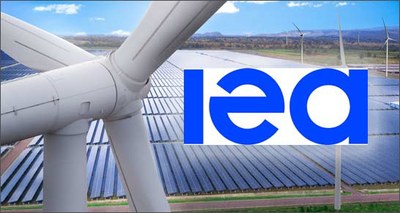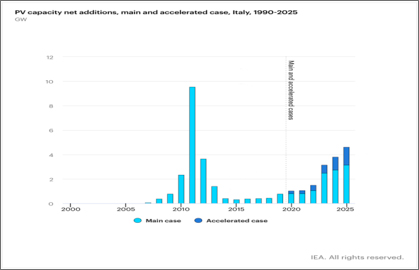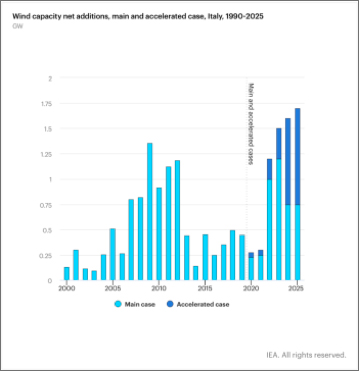Energy: ENEA - IEA report, photovoltaic plants in Italy are on the rise (+12%)
7/1/2021
 In Italy photovoltaics starts to grow again despite the COVID-19 crisis: in the first half of this year new installations have increased by 12% compared to the same period of 2019, with an estimated newly installed capacity throughout 2020 of approximately 0.8 GW. Moreover, in the period 2021-2022, photovoltaics will lead the expansion of all renewables also thanks to fiscal incentives [1], including the super-bonus 110%, as highlighted in the report 'Renewables 2020' by the International Energy Agency (IEA). ENEA contributed to the Italian part and took part in the peer review process. In over 170 pages, the IEA report provides a detailed analysis and forecasts up to 2025 of the effects of the pandemic on renewable energy in the electricity, heat and transport sectors, globally.
In Italy photovoltaics starts to grow again despite the COVID-19 crisis: in the first half of this year new installations have increased by 12% compared to the same period of 2019, with an estimated newly installed capacity throughout 2020 of approximately 0.8 GW. Moreover, in the period 2021-2022, photovoltaics will lead the expansion of all renewables also thanks to fiscal incentives [1], including the super-bonus 110%, as highlighted in the report 'Renewables 2020' by the International Energy Agency (IEA). ENEA contributed to the Italian part and took part in the peer review process. In over 170 pages, the IEA report provides a detailed analysis and forecasts up to 2025 of the effects of the pandemic on renewable energy in the electricity, heat and transport sectors, globally.
In stark contrast to power plants powered by different fuels, renewable energy power plants are set to grow by almost 7% worldwide in 2020.
 " A trend in line with that of the photovoltaics in Italy where, however, only 25 MW of the 1,000 available for large plants were allocated, based on the auction scheme implemented in 2019 [2], a system that will have to be reviewed if we want to solve soil management issues and simplify authorization procedures ”, Simona De Iuliis at the ENEA Department of Energy Technologies and Renewable Sources pointed out.
" A trend in line with that of the photovoltaics in Italy where, however, only 25 MW of the 1,000 available for large plants were allocated, based on the auction scheme implemented in 2019 [2], a system that will have to be reviewed if we want to solve soil management issues and simplify authorization procedures ”, Simona De Iuliis at the ENEA Department of Energy Technologies and Renewable Sources pointed out.
In the period 2023-2025, the average annual additional capacity in Italy is expected to be approximately 4.6 GW. "After stalling since 2012, photovoltaics growth continues to gain momentum in our country thanks to the new objectives set by the Integrated National Energy and Climate Plan, which provides for a target of 52 GW of photovoltaic capacity by 2030, more than double the 20.9 GW installed up to 2019 ”, Simona De Iuliis said.
As for wind, In Italy newly installed wind power capacity in 2020 will be around 0.2 GW, with a 55% reduction compared to 2019, but 0.9 GW related to the auction scheme under way should come into operation in 2022. In the period 2023-2025, the new capacity could remain around 1 GW per year or reach around 1.7 GW in the case of an increased use of auctions and streamlined authorization procedures. In addition, another 5.8 GW will be available from 2025 thanks to the repowering of existing plants.
 Globally, installed renewable capacity will grow by around 4% in 2020, reaching almost 200 GW with the United States and China accounting for a big part of the increase. The largest shares are expected to come from wind and hydroelectric, which will set a new record, accounting for approximately 90% of the total power capacity worldwide.
Globally, installed renewable capacity will grow by around 4% in 2020, reaching almost 200 GW with the United States and China accounting for a big part of the increase. The largest shares are expected to come from wind and hydroelectric, which will set a new record, accounting for approximately 90% of the total power capacity worldwide.
Europe and India will lead a renewable surge in 2021. In Europe this will be possible thanks to the entry into operation of wind farms and solar photovoltaic plants on an industrial scale, previously auctioned in France and Germany. Furthermore, growth will be underpinned by member countries' policies to meet the European 2030 target for renewable energy (32%) and the Recovery and Resilience Facility, which will provide low-cost funding and grants for green policies.
“In May, an early IEA assessment showed that the COVID-19 crisis was hurting - but not halting - renewable energy growth. Six months later, the pandemic continues to affect the global economy and everyday life, but renewable energy markets, particularly clean power generation technologies, have already shown their resilience in this challenging times ", De Iuliis concluded.
For more information:
Simona De Iuliis, ENEA – Department of Energy Technologies and Renewable Sources, simona.deiuliis@enea.it
Report “Renewables 2020” https://www.iea.org/reports/renewables-2020
[1] On-site exchange for installations up to 0.5 MW, premium feed-in for systems over 0.5 MW and Superbonus 100%.
[2] MiSE Decree of 4 July 2019 "Incentives for electricity produced by on shore wind farms, solar photovoltaic, hydroelectric and residual gases from purification processes".
